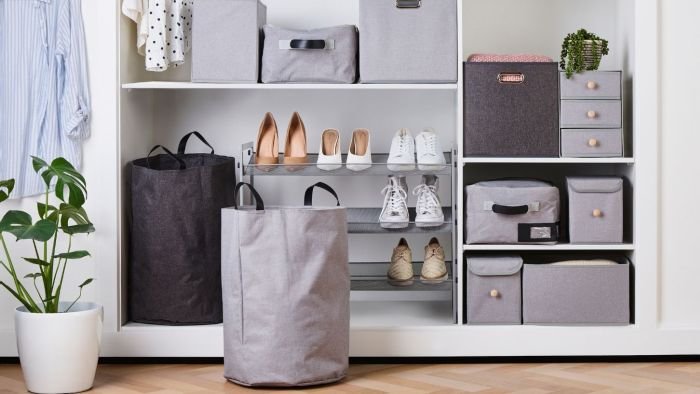Daily Tidying: Spend a few minutes each day putting things back in their designated places. This habit prevents small messes from becoming overwhelming.
Weekly Checks: Set aside time each week to review and tidy up different areas.
Divorce is never easy, and one of the most challenging aspects is explaining the situation to your children. As a parent, you want to minimize the emotional impact while ensuring they feel secure and loved. If you are navigating divorce in New Jersey, it’s important to approach the conversation with sensitivity and honesty.

Before speaking with your children, take time to prepare. If possible, both parents should present a united front, reassuring them that while family dynamics will change, love and support remain constant. Choose a calm setting, free from distractions, and allow them time to process the information.
Children process information differently based on their age. Younger ones may need basic explanations like, “Mom and Dad are going to live in different houses, but we will both always love you.” Older kids may ask more complex questions about custody, living arrangements, or the reasons behind the separation. Answer truthfully but avoid overwhelming them with unnecessary details.
Many families in New Jersey turn to professional support during divorce. Therapists, school counselors, and family mediation services can provide valuable guidance for both parents and children. Additionally, if you are looking for a straightforward way to handle the legal side of separation, you can get started with online divorce in New Jersey to simplify the process.
Many children internalize divorce, believing they caused it in some way. Reiterate that this is an adult decision and has nothing to do with their behavior, school performance, or actions. Reassurance is key in helping them feel safe and secure during this transition.
Every child responds differently. Some may express sadness, anger, or confusion, while others might seem indifferent at first. Encourage open dialogue and let them know that all feelings are valid. If they struggle to communicate, consider books or professional counseling to help them express their emotions.
Regardless of the reasons behind the divorce, avoid speaking negatively about the other parent. Children benefit from having a healthy relationship with both parents, and putting them in the middle of conflict can lead to long-term emotional distress.
Divorce brings change, but maintaining routines can help children feel more secure. Consistency in school schedules, activities, and parenting time arrangements can provide comfort. Even if living situations shift, keeping familiar routines helps reduce anxiety.
Changes like new living arrangements, holiday schedules, and potential stepparents can be overwhelming. Give them time to adjust and involve them in small decisions where appropriate. Remind them that while things will be different, happiness and love will continue to be part of their lives.
Divorce is not a one-time conversation. Keep checking in with your children, answering questions as they arise, and offering ongoing reassurance. Let them know they can always come to you with their thoughts and concerns.
Navigating divorce while ensuring your children’s well-being is a delicate balance. By approaching the discussion with honesty, reassurance, and consistency, you can help them adjust in a healthy way. If you’re ready to move forward with the legal process, you can get started with online divorce in New Jersey, making the transition smoother and more manageable for your entire family.…
A clutter-free home is more than just visually appealing—it promotes a sense of peace and efficiency. Whether you live in a compact apartment or a sprawling house, optimizing your space through decluttering and smart storage can make your living environment more enjoyable and functional. Here’s a comprehensive guide to help you transform your home into an organized haven.
The first step in this process is to evaluate and understand your requirements and plan accordingly.
Begin by taking a good look at your living space. Identify areas that feel cluttered or disorganized and note which rooms or zones need the most attention. Creating a clear plan will make the decluttering process more manageable and focused.

Set realistic, specific goals for each area. For example, decide to clear out your bedroom closet by the end of the week or to reorganize the kitchen cabinets over the weekend. Having clear objectives helps maintain momentum and makes the task less overwhelming.
Secondly, you should start decluttering and sorting the space.
Decluttering starts with sorting your belongings. Create three categories: Keep, Donate/Sell, and Discard. Be honest with yourself about what you truly need and use. If an item hasn’t served a purpose in the past year, it might be time to let it go.
Here are a few tips that would help you declutter effectively.
Sentimental Items: Limit sentimental keepsakes to a manageable amount. Keep what truly matters and take photos of the rest to preserve memories without the physical bulk.
The One-Year Rule: If you haven’t used an item in the last year, consider whether it’s worth keeping. Following some useful tips can prove to be of great help when it comes to effective decluttering.
Daily Decluttering: Incorporate small decluttering tasks into your daily routine to prevent buildup.
Next, you can start organizing your stuff by using storage ideas and utilizing professional storage Osoyoos facilities.
Once you’ve reduced the clutter, it’s time to organize what’s left. Efficient storage is key to maintaining a tidy space.
Clear Containers: Transparent bins allow you to see contents at a glance, making it easier to find what you need.
Vertical Solutions: Use vertical space by adding shelves or hanging organizers. This is especially useful in closets and small kitchens.
Dual-Purpose Furniture: Opt for furniture with built-in storage, such as beds with drawers or coffee tables with hidden compartments.
Kitchen: Install pull-out shelves or lazy Susans in cabinets to maximize space and accessibility. Use clear jars for pantry items to keep them organized and visible.
Living Room: Choose furniture that provides storage options, like ottomans with space inside. Use baskets or bins to keep items like magazines or toys neatly stored.
Bedroom: Implement under-bed storage for seasonal clothing or extra linens. Use closet systems with shelves, rods, and drawers to optimize storage.
Following a routine can help you maintain order for your belongings.
Strategies for Maintenance
Daily Tidying: Spend a few minutes each day putting things back in their designated places. This habit prevents small messes from becoming overwhelming.
Weekly Checks: Set aside time each week to review and tidy up different areas.